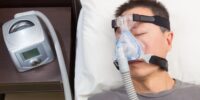How To Incorporate Regular Exercise In Sleep Apnea Management?

Sleep apnea is a common sleep disorder characterized by interrupted breathing during sleep, leading to poor sleep quality and various health complications. Regular exercise has been shown to have numerous benefits for sleep apnea management, including improving sleep quality, reducing daytime sleepiness, and enhancing overall well-being.
This article aims to provide guidance on incorporating regular exercise into sleep apnea management.
Understanding the connection between exercise and sleep apnea is crucial. Consultation with a healthcare provider is recommended to determine the appropriate exercise regimen and ensure safety. Starting slowly and gradually increasing intensity is advised to prevent excessive strain. Choosing activities that suit one’s fitness level and interests increases adherence to the exercise routine.
Creating a consistent exercise routine is essential for long-term success. Incorporating both cardiovascular and strength training exercises helps improve respiratory muscle strength and overall fitness. Monitoring progress and adjusting the routine as needed ensures continual improvement.
Finally, staying motivated and enjoying the benefits of regular exercise are key to sustaining a healthy lifestyle and managing sleep apnea effectively.
Key Takeaways
- Regular exercise has numerous benefits for sleep apnea management, including improving sleep quality, reducing daytime sleepiness, and enhancing overall well-being.
- Consultation with a healthcare provider is recommended to determine the appropriate exercise regimen and ensure safety.
- Starting slowly and gradually increasing intensity is advised to prevent excessive strain and the risk of injury.
- Choosing activities that suit one’s fitness level and interests increases adherence to the exercise routine.
Understand the Connection Between Exercise and Sleep Apnea
The relationship between regular exercise and sleep apnea can be comprehended by examining the impact of physical activity on the management and prevention of sleep apnea symptoms.
Several studies have shown that exercise can play a crucial role in reducing the severity of sleep apnea and improving overall sleep quality. Engaging in regular exercise can lead to weight loss, which is often associated with a reduction in sleep apnea symptoms. Physical activity can also enhance cardiovascular fitness and strengthen respiratory muscles, thereby improving breathing during sleep.
Moreover, exercise has been found to reduce daytime sleepiness, a common symptom of sleep apnea. However, it is important to note that the effectiveness of exercise as a standalone treatment for sleep apnea may vary among individuals.
In some cases, a combination of exercise and other treatment modalities, such as continuous positive airway pressure (CPAP) therapy, may be necessary for optimal sleep apnea management.
Consult with Your Healthcare Provider
Consultation with a healthcare provider is essential for individuals seeking to integrate physical activity into their sleep apnea treatment plan. Sleep apnea is a complex condition that requires personalized management strategies. Before starting any exercise regimen, it is crucial to consult with a healthcare provider who specializes in sleep disorders. They can assess the severity of the sleep apnea, evaluate any potential risks or contraindications, and provide guidance on suitable exercise options. Additionally, healthcare providers can help individuals set realistic goals, monitor their progress, and make necessary adjustments to their exercise routine. By working closely with a healthcare provider, individuals can ensure that their exercise program is safe, effective, and tailored to their specific needs and limitations.
| Pros of Consultation with Healthcare Provider | Cons of Not Consulting with Healthcare Provider | Risks of Not Consulting with Healthcare Provider | ||||
|---|---|---|---|---|---|---|
| Personalized guidance and support | Inadequate knowledge about suitable exercises | Increased risk of injury | ||||
| Monitoring of progress and adjustments | Lack of professional supervision | Exacerbation of sleep apnea symptoms | ||||
| Identification of contraindications | Difficulty in setting realistic goals | Ineffective management of sleep apnea | Lack of education and understanding of sleep apnea | Failure to adhere to treatment plan and recommendations | Limited access to necessary resources and support |
Start Slow and Gradually Increase Intensity
To ensure a safe and effective integration of physical activity into a treatment plan for sleep apnea, it is advisable to gradually increase the intensity of exercise over time. Starting slow and gradually increasing intensity allows the body to adapt to the demands of exercise, reducing the risk of injury or overexertion.
Here are five tips to help incorporate regular exercise into sleep apnea management:
- Begin with low-impact activities such as walking or swimming.
- Gradually increase the duration and frequency of exercise sessions.
- Incorporate aerobic exercises such as cycling or jogging to improve cardiovascular fitness.
- Integrate strength training exercises to build muscle and improve overall body strength.
- Include flexibility exercises such as yoga or stretching to enhance joint mobility and reduce muscle stiffness.
By following these recommendations, individuals with sleep apnea can gradually enhance their physical fitness while minimizing the potential risks associated with exercise.
Choose Activities That Suit Your Fitness Level and Interests
Optimal selection of physical activities that align with an individual’s current fitness level and personal interests is crucial for incorporating exercise into a comprehensive treatment plan for sleep apnea.
It is important to choose activities that are suitable for the individual’s fitness level to prevent excessive strain on the body. Low-impact exercises such as walking, swimming, or cycling can be beneficial for beginners or those with limited mobility. These activities provide cardiovascular benefits without putting excessive stress on the joints.
For those with a higher fitness level, more vigorous activities like running or high-intensity interval training may be appropriate.
It is also essential to consider personal interests when selecting activities, as enjoyment and motivation play a significant role in adherence to an exercise routine.
By choosing activities that suit both the individual’s fitness level and personal interests, regular exercise can be successfully incorporated into the management of sleep apnea.
Create a Consistent Exercise Routine
Creating a consistent exercise routine is essential for individuals looking to integrate physical activity into their daily lives. Consistency is key in reaping the benefits of exercise, especially for those managing sleep apnea. By establishing a regular exercise schedule, individuals can ensure that physical activity becomes a habit rather than an occasional occurrence. This can help in managing weight, improving cardiovascular health, and reducing symptoms of sleep apnea.
To create a consistent routine, it is important to set specific exercise goals, such as the frequency, duration, and intensity of workouts. Additionally, choosing activities that are enjoyable and suit one’s fitness level can enhance adherence to the routine. Incorporating exercise into daily life can be achieved by scheduling workouts at a specific time, incorporating physical activity into daily tasks, or joining a fitness class or group.
Overall, by establishing a consistent exercise routine, individuals can effectively manage sleep apnea and improve their overall health and well-being.
Incorporate Both Cardiovascular and Strength Training Exercises
Both cardiovascular and strength training exercises play a crucial role in maintaining a well-rounded fitness routine. Cardiovascular exercises, such as running, swimming, or cycling, increase heart rate and improve lung function, which can be beneficial for individuals with sleep apnea.
Regular aerobic activities help to strengthen the heart muscle, increase oxygen intake, and improve overall cardiovascular health.
Strength training exercises, on the other hand, focus on building muscle strength and endurance. Incorporating resistance training, such as weightlifting or bodyweight exercises, can help improve muscle tone, increase metabolism, and aid in weight management, which is important for individuals with sleep apnea.
A well-balanced exercise routine that combines both cardiovascular and strength training exercises can contribute to better sleep quality, increased energy levels, and overall improved management of sleep apnea.
- Regular exercise helps reduce symptoms of sleep apnea
- Improved cardiovascular health leads to better oxygenation
- Strength training aids in weight management
- Enhanced muscle tone can reduce airway obstruction
- Exercise promotes better sleep quality.
Monitor Your Progress and Adjust Your Routine as Needed
To ensure continued progress and effectiveness in your fitness routine, it is important to regularly monitor and make adjustments as necessary.
Monitoring your progress allows you to assess the impact of your exercise routine on sleep apnea management and identify areas that may need improvement. One way to monitor your progress is by keeping a record of your exercise sessions, including the type of exercises performed, duration, and intensity. This record can help you track your progress over time and identify any plateaus or declines in performance.
Additionally, it is important to listen to your body and make adjustments to your routine as needed. This may include modifying the intensity or duration of exercises, incorporating new exercises, or seeking guidance from a healthcare professional or fitness trainer.
By monitoring and adjusting your routine, you can optimize the benefits of exercise in managing sleep apnea.
Stay Motivated and Enjoy the Benefits of Regular Exercise
To effectively manage sleep apnea, it is crucial to monitor your progress and make necessary adjustments to your exercise routine. By tracking your efforts, you can determine what exercises work best for you and modify your program accordingly. This will help ensure that you are consistently challenging yourself and making progress towards your goals.
Additionally, it is important to stay motivated and enjoy the benefits that regular exercise can provide for sleep apnea management. Engaging in physical activity can improve sleep quality, reduce daytime sleepiness, and enhance overall well-being. By focusing on the positive outcomes of exercise, such as increased energy levels and improved mood, individuals with sleep apnea can stay motivated to maintain a regular exercise routine.
Embracing the benefits of regular exercise can contribute to the effective management of sleep apnea symptoms.
Frequently Asked Questions
How does regular exercise affect sleep apnea symptoms?
Regular exercise has been shown to have a positive impact on sleep apnea symptoms. It can help improve sleep quality, reduce the severity of sleep apnea episodes, and enhance overall cardiovascular health.
Can exercising too much worsen sleep apnea symptoms?
Exercising excessively can potentially worsen sleep apnea symptoms. Although regular exercise is generally beneficial, excessive physical activity can lead to increased inflammation and stress, which can exacerbate sleep apnea and its associated symptoms.
Are there specific exercises that are more effective for managing sleep apnea?
There is no specific exercise that has been proven to be more effective for managing sleep apnea. However, regular exercise, in general, has been shown to improve sleep quality and reduce sleep apnea symptoms.
How long should I exercise each day to see improvements in sleep apnea?
The duration of exercise required to see improvements in sleep apnea can vary depending on individual factors. However, research suggests that engaging in at least 30 minutes of moderate-intensity aerobic exercise most days of the week may be beneficial for managing sleep apnea.
Can exercise alone be enough to manage sleep apnea, or is it necessary to use other treatment methods as well?
Exercise alone may not be enough to manage sleep apnea. It is typically recommended to use exercise as a complementary therapy alongside other treatment methods, such as continuous positive airway pressure (CPAP) therapy or oral appliances.











